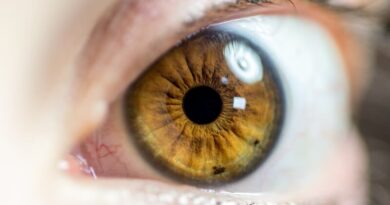5 Benefits of Monitoring Employees’ Productive Time and Idle Time With Biometric Technology
In recent years, there have been significant changes in the way people work, especially due to the rapid advancement of technology. Any business that hopes to have a competitive edge, needs to stay on top of the technological changes.
Biometrics comprise one such change. This technology and the associated systems are slowly but surely transforming the work environment. It does away with the nuisance of access cards, passwords, and pins. All someone needs for identification and access is their own self. Identification is solely based on unique physical characteristics. Various forms of this technology are available, and these are being put to use in a multitude of ways. Innovative biometric solutions emerge on a regular basis, and organizations are also coming up with creative ways of utilizing biometric technology.
Biometrics is proving to be a game-changer when it comes to monitoring the productivity of employees. The utilization of biometric technology for monitoring the productive and idle time of employees comes with a myriad of advantages, including but not limited to these:
Enhances Precision in Tracking Productivity
Biometric systems provide accurate and real-time data. There is considerable transparency in the process, which can boost trust among employers and employees. It can be quite motivating for the employees since they will have the assurance that their contributions won’t go unrecorded.
The precision advantage of biometric systems also helps companies when it is time to process payroll. Due to the biometric system, the precise number of productive hours will be available at a glance allowing for faster processing of remuneration. The usage of biometric technology for tracking productivity also reduces the administrative burden. Additionally, it helps avoid the errors of the traditional manual method. Biometric systems also facilitate insightful analysis of the performance of individual employees as well as teams through precise records.
Bolsters Security
With biometric systems, such as fingerprint or facial recognition, time-tracking processes get an extra layer of security. Biometric technology is quite tamper-resistant as compared to traditional monitoring systems. Because of the enhanced security, the organization can acquire reliable data that is free from inaccuracies. Biometric technology mitigates the risk of unauthorized access, security breaches, data theft, and identity-related issues.
A biometric system is an efficient safeguard against time fraud, buddy punching, and various other forms of manipulation. It ensures that the records only comprise actual hours spent on productive tasks.
Facilitates Fair and Objective Performance Evaluation
Biometric systems help employers identify the work patterns of employees and recognize their contributions. With accurate, reliable, and precise records, biometric systems facilitate fair and objective evaluation of the performance of employees. Such systems help avoid the effect of bias on performance evaluation. Additionally, such systems can help retain and advance employees based on their merits.
The records of a biometric system can help the management identify the areas for improvement and make proactive adjustments. Such a system will also promote a sense of equity among employees, and they might also work more enthusiastically because they will understand that their advancement is strictly tied to their performance and accomplishments. The system will also increase accountability in the workforce, and take some pressure off the managers.
Time and Resource Management
The integration of biometric technology with monitoring systems makes it easier for managers to recognize, understand, and address inefficiencies in workflow. The data-driven insights from biometric systems help managers make better decisions and take necessary steps to boost operational efficiency. This can lead to considerable cost savings for the organization. Biometric systems enable managers to adopt a proactive approach towards decision-making and optimize the allocation of resources.
For even better management of teams and resources, line managers should consider taking up a line management course with Acuity Training. This course will equip them with the skills required for delegating work successfully, monitoring team performance, developing team trust, making better decisions, and resolving conflicts easily.
Ensures Compliance and Boosts Reputation
Because biometric systems ensure that precise records of work hours are available at all times, they help organizations adhere to labor regulations related to working hours, breaks, and overtime compensation. Since biometric systems provide a clear record of employee activities and generate detailed audit reports, they help ensure legal compliance. Another crucial aspect of labor regulations is data privacy. The security and encryption of data in biometric systems help address such concerns.
In Conclusion
Adoption of a biometric system is in essence a commitment to modernization. Biometric systems allow a business organization to make the best use of the latest technological advancements. Biometric technology has immense transformative potential, which organizations can utilize for not only measuring and monitoring productivity but also optimizing it for sustained success.















